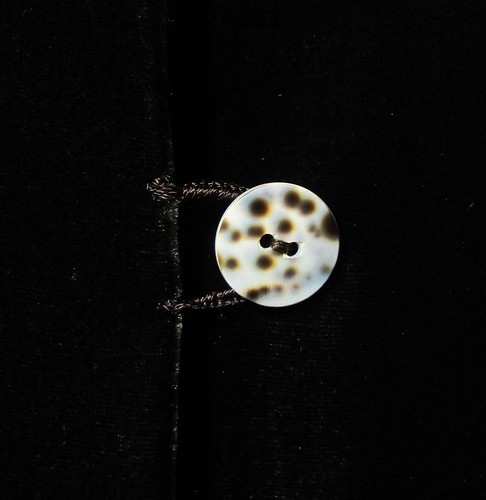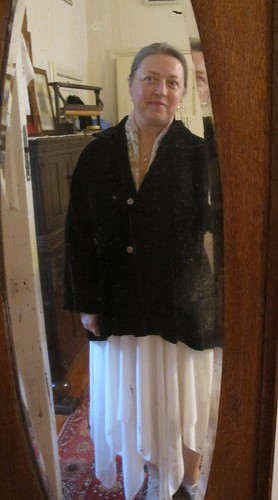I have a good friend for whom the quatrefoil is significant. This is a four petaled flower thing used in heraldry. Something over a year ago I got excited with the idea that I could make quatrefoils with shibori. Just do a standard square type fold and clamp it near one corner. But what to make and therefore what fabric to dye? Well, I have the coat pattern I made for her back in 2015 and she lives in Tasmania which is is on the cold side. So maybe a dressing gown? I’d had the thought for a while that such a thing might be nice done in cotton flannelette, which is also easily dyeable. Voila I had a plan. I managed to source some white flannelette, whew.
The small flaw in this plan was that flannelette is bulky, and I only had two appropriate clamps, so I could only do two quatrefoil panels, bother. Never mind, these became the gown fronts. I did another two with similar square folding but just tied which became the back panels. One was done pleated which i used for collar and facings. The last piece was done wrapped around long screws which gives a pretty effect that makes me think of dandelion clocks. This I used for sleeves and pockets.
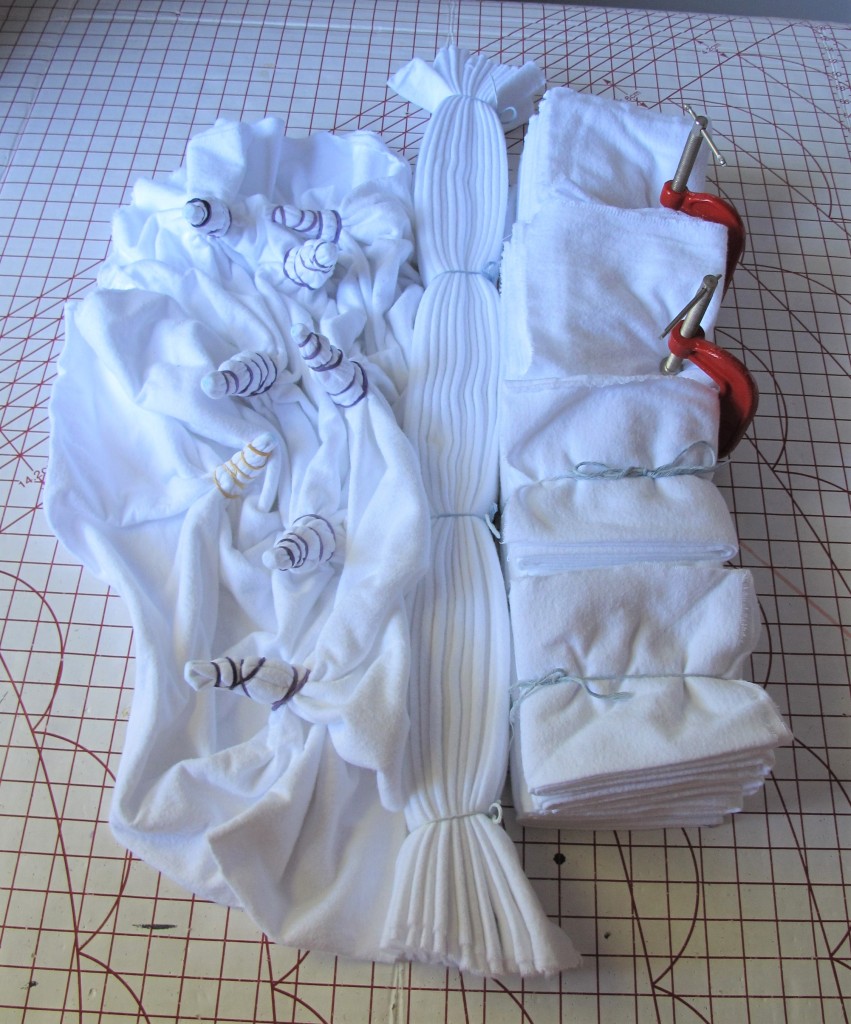
The best quatrefoil effects I managed, photobombed by a pocket:
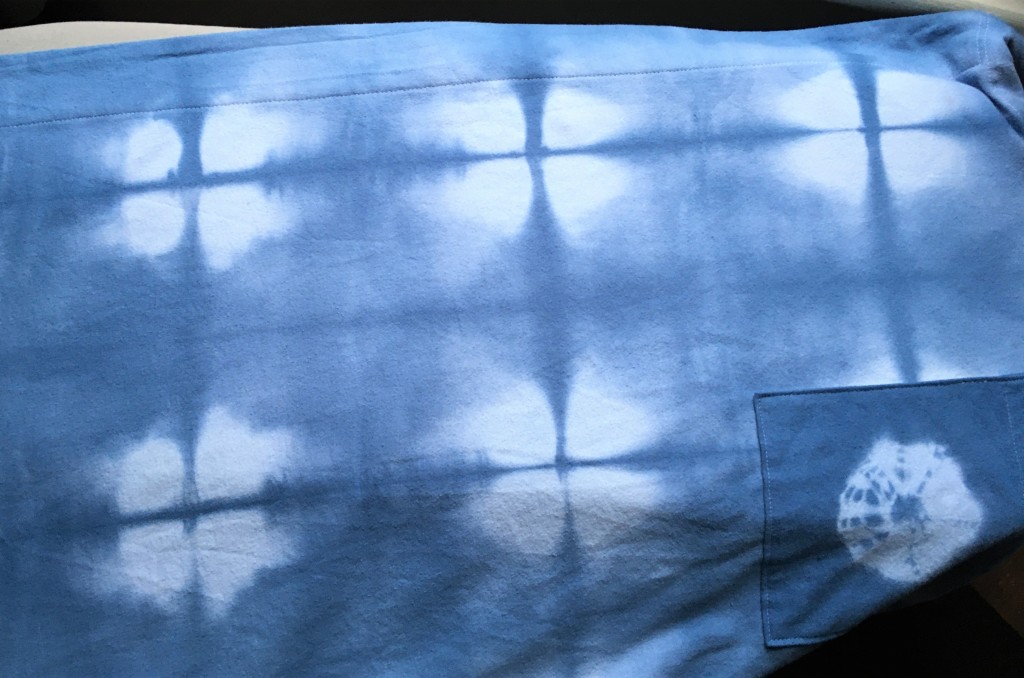
A dandelion clock sleeve:
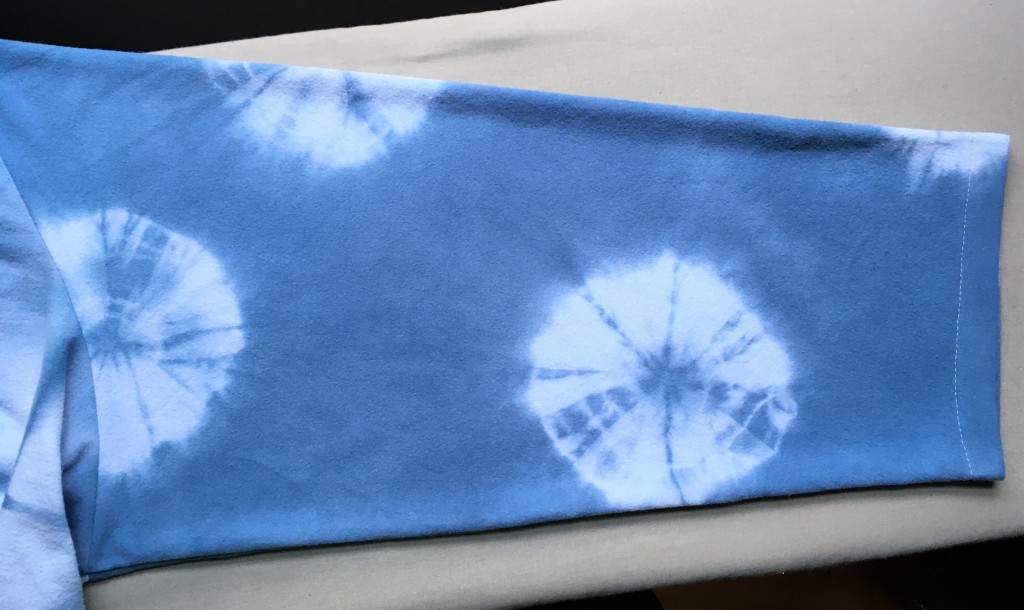
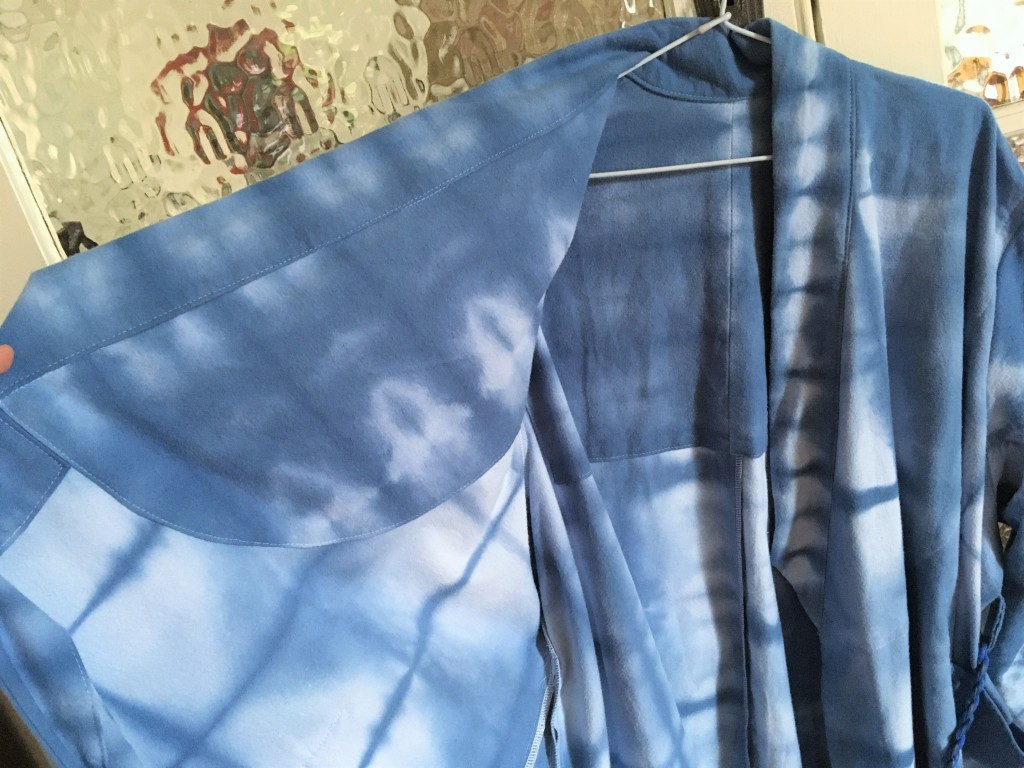
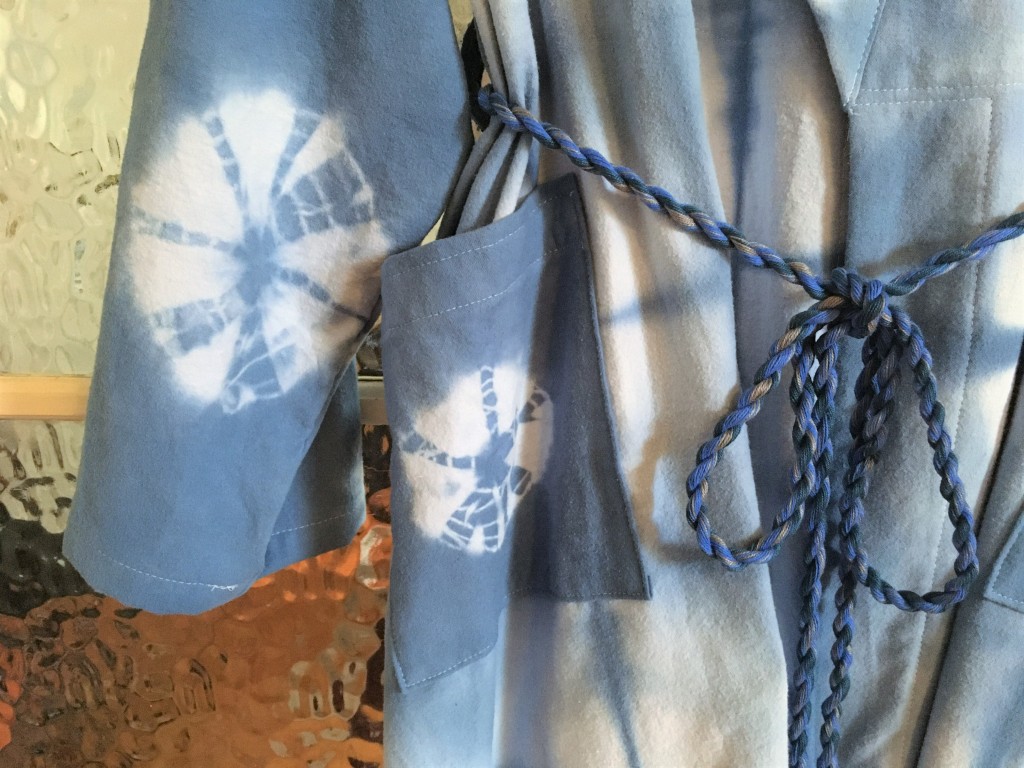
Here is the whole thing from the front. It’s a fusion garment. A-line body, western cut sleeves and armscye, kimonoesque collar for good chest coverage and I confess, ease of construction.
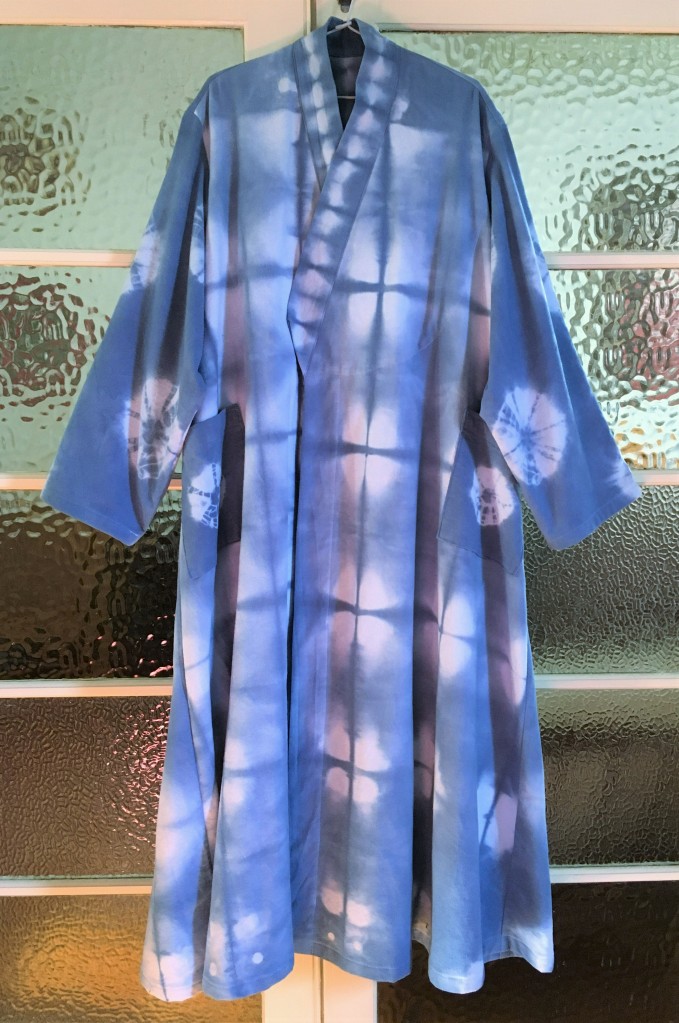
and from the back
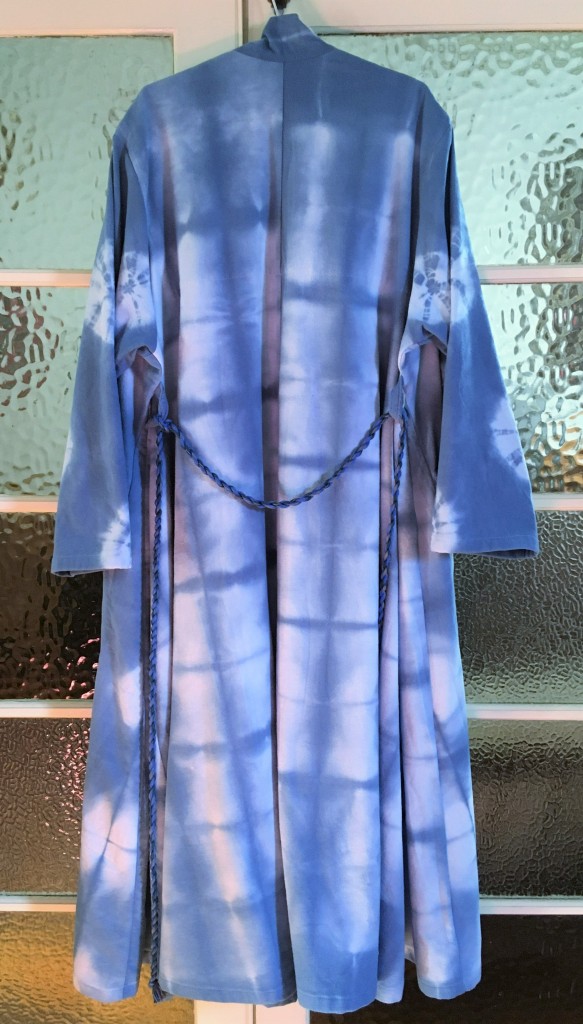
I really like it. It is one of those gift makes that I would be very happy to keep! I didn’t though, I was good and posted it off to her as was intended.


























































